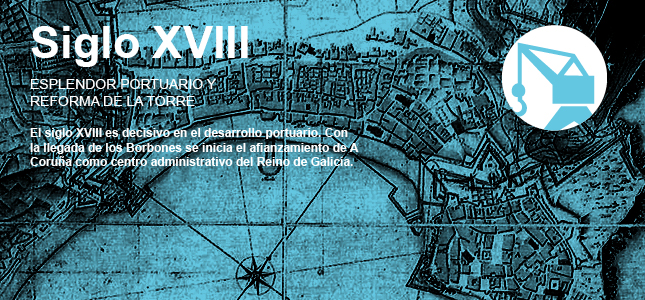18th Century

The 18th century was decisive in the port's development. The arrival of the Bourbons heralded the beginning of the consolidation of A Coruña as the administrative centre of the Kingdom of Galicia.
The port was opened up to maritime traffic with the Americas through the Maritime Post established by Charles III and it was granted free trade with the Indies. This situation favoured the expansion of the canning sector and the appearance of an incipient industry of numerous products for export. At the end of the 18th century the city had around 13,000 inhabitants, port traffic of around 250 vessels and 14,000 tonnes of goods.
The creation of the Royal Maritime Land Consulate was conducive to the establishment of the Nautical and Business Schools, as well as the reconstruction of the Tower of Hercules, at the hand of the engineer Eustaquio Giannini. This was the most important reform in the history of the Roman lighthouse, and the tower recovered its splendour, took on its current form and the conservation thereof was guaranteed.
With regard to town planning, worthy of note was a development of the project to extend the city with the Ensanche district, in response to the city's growing population. There were also projects aimed at closing and protecting the seafront in La Pescadería and the construction of the port's perimeter wall, jetties and ramps for port activity. During the second half of the 18th century, the sea front in La Pescadería was built, along with the Customs buildings and the Casas de Paredes.
